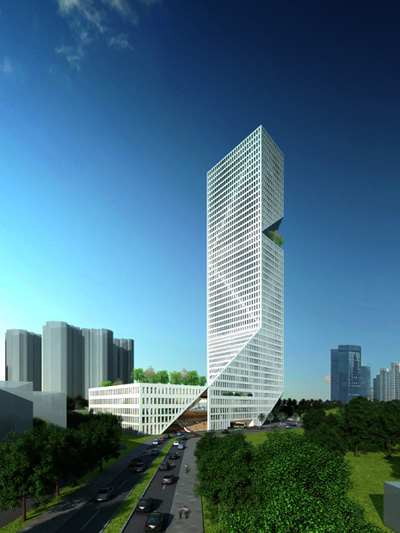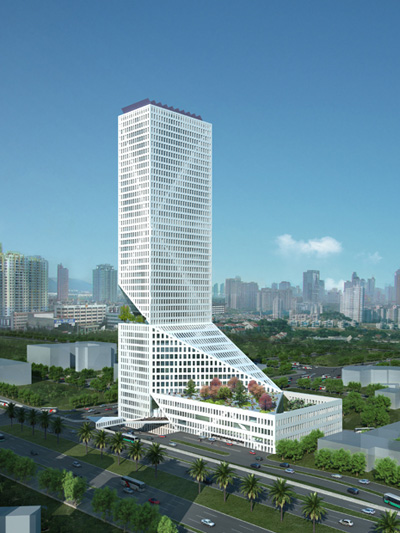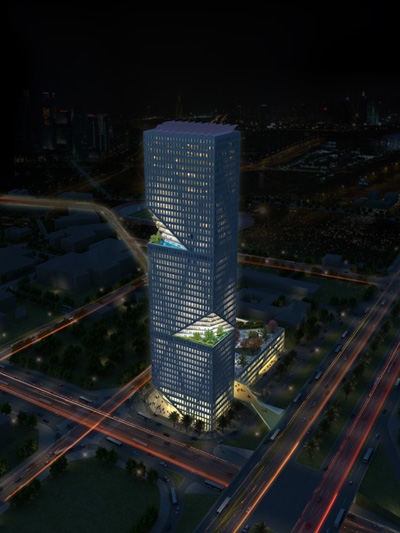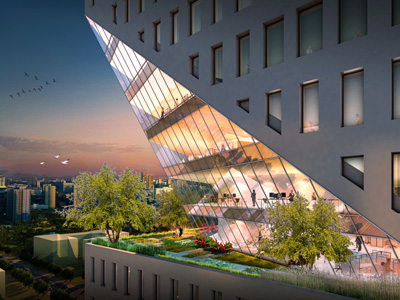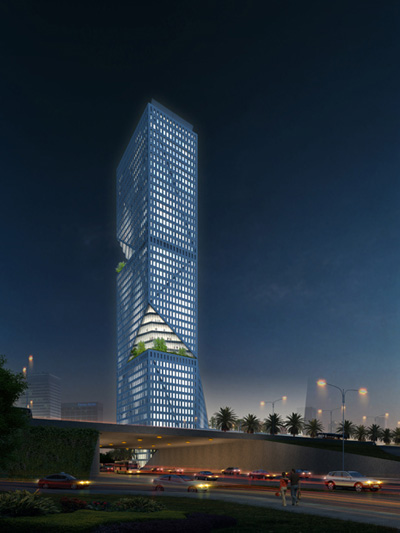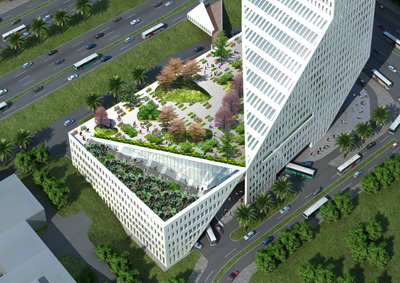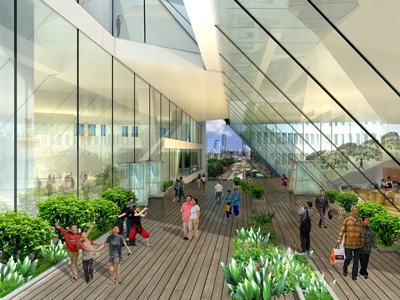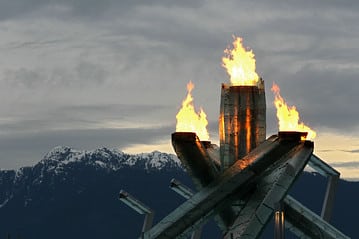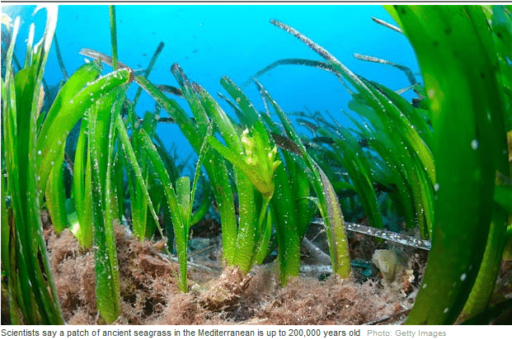The Shenzhen Interchange tower, designed by WORKac for the Shenzhen Metro Tower, is a vertical city. The vertical building – ShenZhen Interchange – is designed to accommodate sustainability, connectivity and innovation. The ultramodern skyscraper allows diversity with the integration of office, hotels, metro and bus connectivity and shopping pedestal all at one place.
The tower is located at two significant intersections: the horizontal crossroads of major boulevards and a new vertical interchange between the underground metro, ground-level bus station, shopping podium and the offices and hotel above – essentially linking the metro with the sky. Our design celebrates this condition by tracing the diagonal line of the Metro Line #1 up through the building. The subway can also be easily accessed directly through the main elevators of the tower, which also provides direct and convenient access for hotel guests and office workers to travel directly from the secure tower metro lobby to the upper floors.
Other diagonal lines – all derived from the trajectory of the metro – become the organizing motif of the building. A series of open green spaces have been strategically inserted between the different programmatic zones. These “green pockets” are chiseled into the building, creating a natural counterpoint to the hard edges of the tower and providing a striking visual confirmation of the building’s commitment to the new ecological urbanism. The building’s diagonal forms also help the structural system.
Efficiency is a hallmark of the building’s systems. The floors directly below each cut take advantage of the requirements for large structural trusses and refuge floors to create space for natural water filtration systems. By sharing systems, the building can also take advantage of the inverse day-night load cycles of the offices and the hotel, spreading out the maximum loads across 24 hours. Rooftop solar panels at the tower and podium will help provide additional energy for the building.
The Shenzhen Interchange is therefore not just an attempt at being ornamental, but is also a visible effort of embracement of sustainability and diversity toward public space usage and adaptation of ecological urbanism.
[ttjad keyword=”general”]

